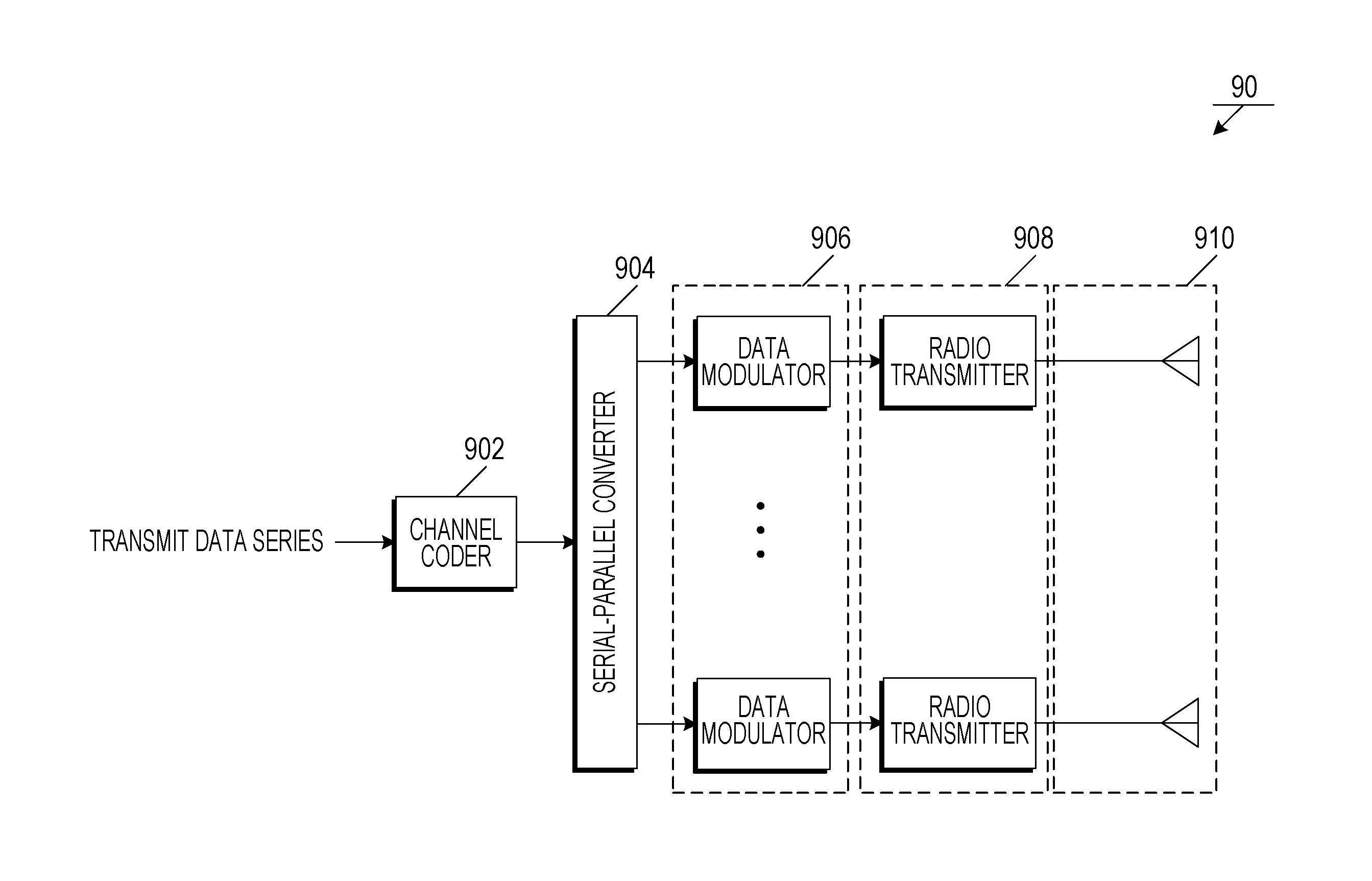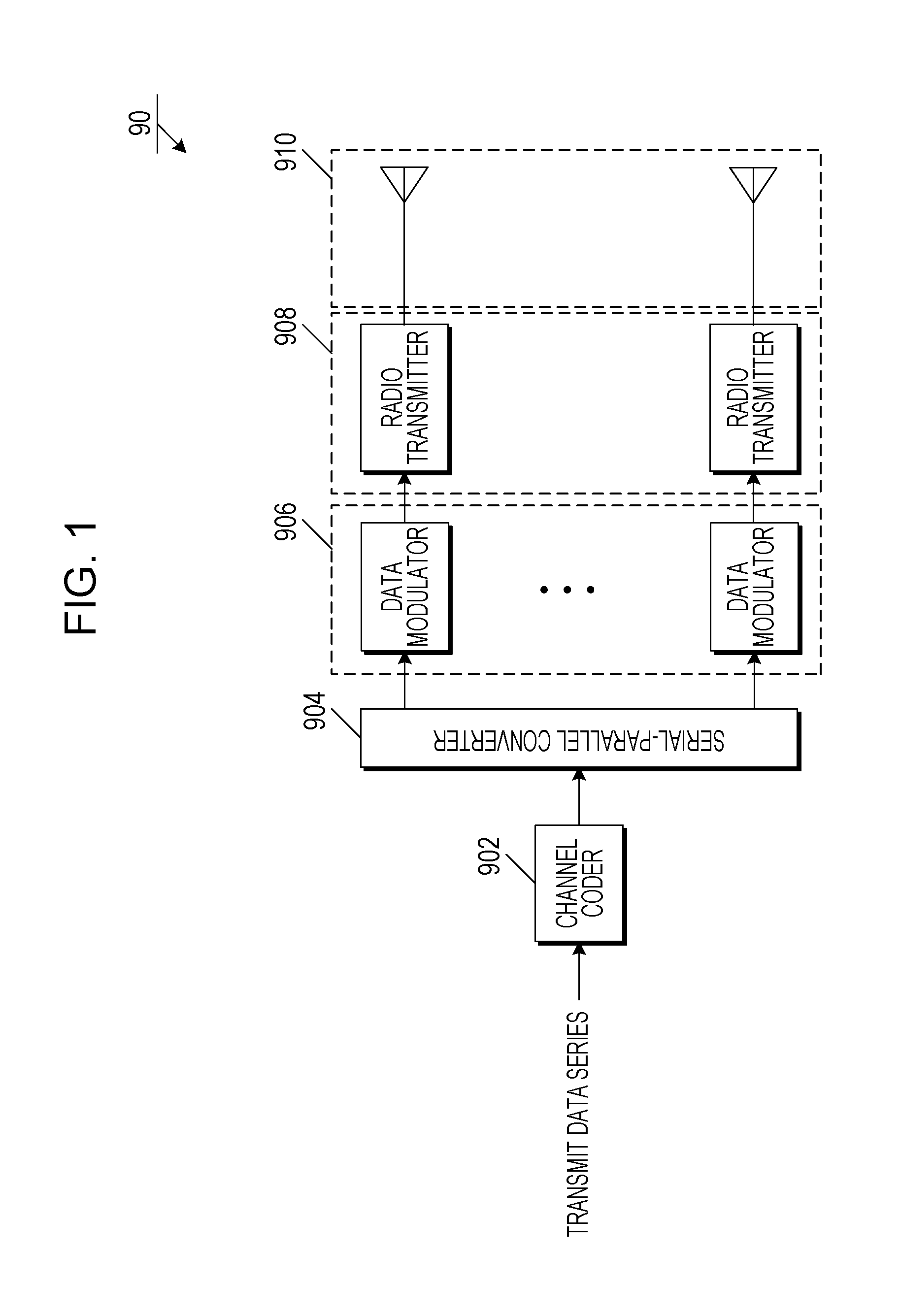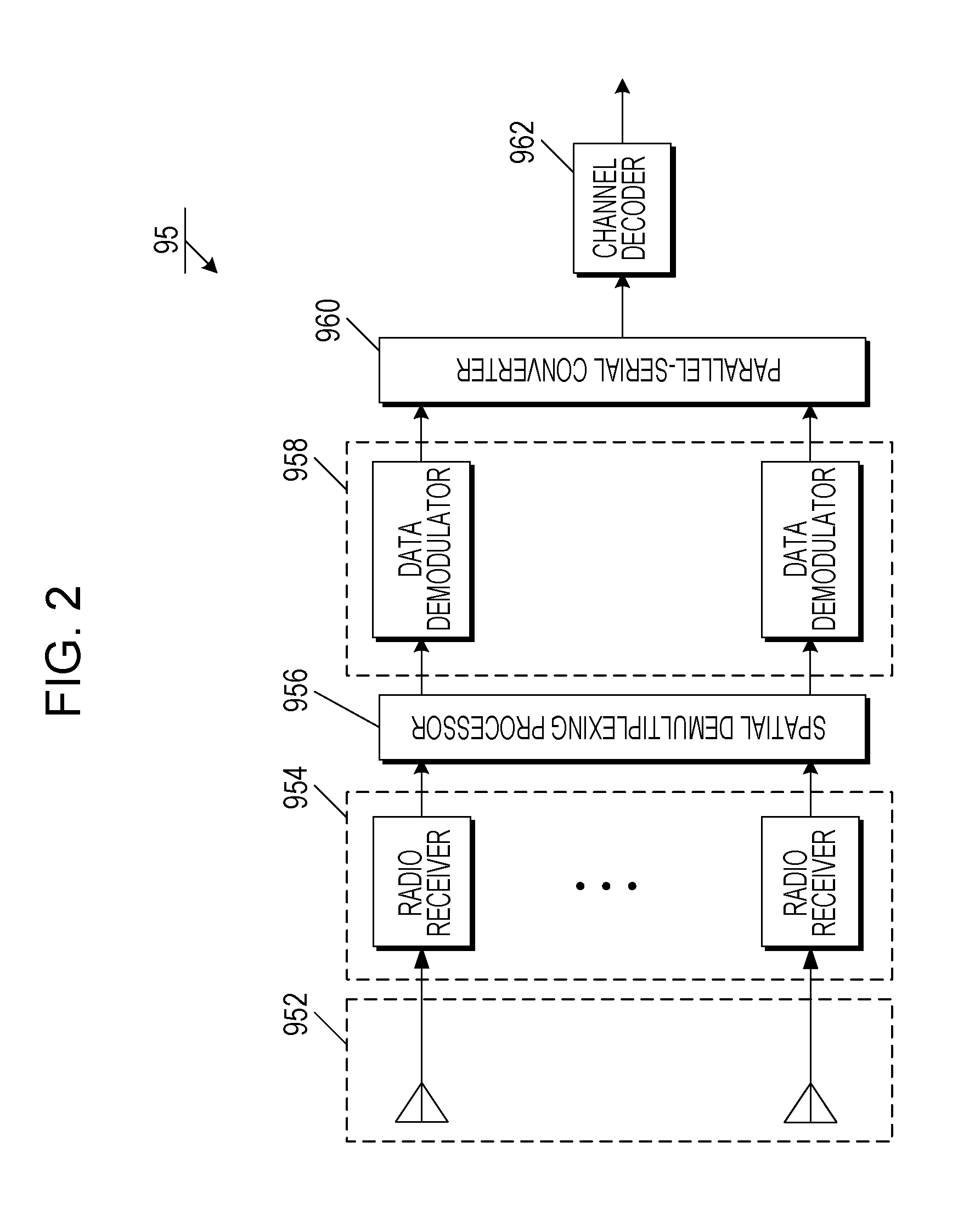Wireless communication system, base station device, and terminal device
a wireless communication system and base station technology, applied in the field of wireless communication systems, can solve the problems of increasing performance degradation, limited number of receive antennas that can be arranged in the mobile station device, and marked degradation of spatial filtering performance, so as to improve the frequency utilization efficiency of the wireless communication system
- Summary
- Abstract
- Description
- Claims
- Application Information
AI Technical Summary
Benefits of technology
Problems solved by technology
Method used
Image
Examples
first embodiment
2. First Embodiment
[0152]A first embodiment, to which the invention is applied, is aimed at MIMO spatial multiplexing transmission in which a base station device including Nt transmit antennas and a terminal device including Nr receive antennas make communication.
[0153]Here, FIG. 10 is a block diagram showing a configuration of a base station device 10. FIG. 11 is a block diagram showing a configuration of a terminal device 20. It is assumed that a transmitter (a base station device) transmits R data streams to a receiver (a terminal device). R has to satisfy min(Nt, Nr)≧R. Description is given below based on R=Nt=Nr.
[0154]FIG. 10 is an illustration showing the configuration of the base station device 10, and includes a channel coder 110, a serial-parallel converter 120, data modulators 130, radio transmitters 140, and antennas 150. Also, FIG. 11 is an illustration showing the configuration of the terminal device 20, and includes antennas 210, radio receivers 220, a spatial demultip...
second embodiment
3. Second Embodiment
[0176]The first embodiment is aimed at the MIMO transmission between the base station device including the plurality of transmit antennas and the terminal device including the plurality of receive antennas by one-to-one correspondence. Such MIMO transmission is called single user MIMO (SU-MIMO) transmission.
[0177]Meanwhile, the maximum frequency utilization efficiency that can be provided by the MIMO transmission is proportional to a smaller value of the Nt transmit antennas and the Nr receive antennas included in the wireless system. However, since the number of antennas that can be arranged in the terminal device is limited, the frequency utilization efficiency that can be achieved by the SU-MIMO transmission is also limited.
[0178]Owing to this, multi-user MIMO (MU-MIMO) transmission is becoming popular, in which the MIMO transmission is performed while a plurality of terminal devices are assumed as a large-scale antenna array. In the downlink MU-MIMO transmiss...
third embodiment
4. Third Embodiment
[0226]The second embodiment has been aimed at the downlink MU-MIMO transmission that performs the precoding based on the LR technology in the base station device, and the method of applying the adaptive modulation technology that applies the different modulation schemes for the respective users has been disclosed. In the downlink MU-MIMO, the modulation scheme has to be changed so that the base station device can properly perform the modulo arithmetic that restricts an increase in transmit power.
[0227]In the third embodiment, a method of allowing the adaptive modulation technology to be performed in the downlink MU-MIMO transmission that performs the precoding based on the LR technology, by a data modulation method different from the method targeted in any of the first and second embodiments.
[0228]In the third embodiment, like the second embodiment, it is considered that U terminal devices 23 each having one receive antenna are connected with a base station device...
PUM
 Login to View More
Login to View More Abstract
Description
Claims
Application Information
 Login to View More
Login to View More - R&D
- Intellectual Property
- Life Sciences
- Materials
- Tech Scout
- Unparalleled Data Quality
- Higher Quality Content
- 60% Fewer Hallucinations
Browse by: Latest US Patents, China's latest patents, Technical Efficacy Thesaurus, Application Domain, Technology Topic, Popular Technical Reports.
© 2025 PatSnap. All rights reserved.Legal|Privacy policy|Modern Slavery Act Transparency Statement|Sitemap|About US| Contact US: help@patsnap.com



